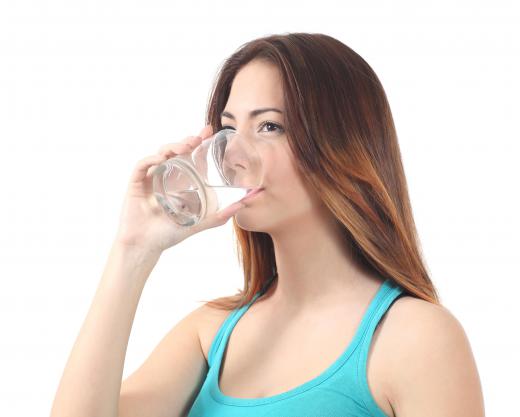Lead crystal is made from glass that has been treated with lead oxide and hand or machine cut to make facets. This gives the glass a higher index of refraction and creates an attractive sparkling effect that is prized throughout the world.
Englishman George Ravenscroft is credited with discovering lead crystal in 1676. Today, a number of companies are known for making it, and they produce drinking glasses and serving dishes, as well as sculptures, miniatures, jewelry, chandeliers, candle holders, Christmas ornaments, and home décor items from this material.

Lead crystal can be purchased from jewelry stores, fine department stores, and online specialty shops. Prices will vary according to the type of item, manufacturer, and quality of the crystal. It is a popular gift for weddings, anniversaries, graduations, and baby showers. In fact, lead crystal keepsakes are passed from generation to generation in many families.

While lead crystal is undoubtedly beautiful, it is notoriously fragile. Since even dust can act as a damaging abrasive agent, great care must be taken to clean and store items made from this material. Experts recommend that owners use a blow dryer on the cool air setting to remove dry dust particles from crystal items. People should avoid using harsh commercial cleaners, but it is safe to polish the crystal gently with a soft, lint-free cloth. To avoid leaving unsightly fingerprints, cleaners always wear gloves when working. If possible, crystal should be stored in a locked glass display cabinet.

Some types of crystal can contain up to 33% lead, so people should use caution when drinking or eating from it. Acidic food and beverages, such as pickles, fruit juices, wine, or soft drinks, can leach significant amounts of lead from the containers they are stored in. Research has shown that lead exposure can cause forgetfulness, memory loss, nausea, depression, fatigue, joint pain, vomiting, and abdominal cramping. High levels of lead exposure can even lead to sterility or brain damage.

To reduce the risks associated with eating and drinking from lead crystal, people should always store food and beverages in lead-free containers and only transfer them to the crystal immediately before serving. New crystal can be soaked in vinegar for 24 hours before it's used, washed by hand with a mild detergent, and rinsed thoroughly with lukewarm water. Since the dangers of lead exposure are even more prominent for children and pregnant women, however, it’s best to avoid using lead crystal entirely for these groups.

